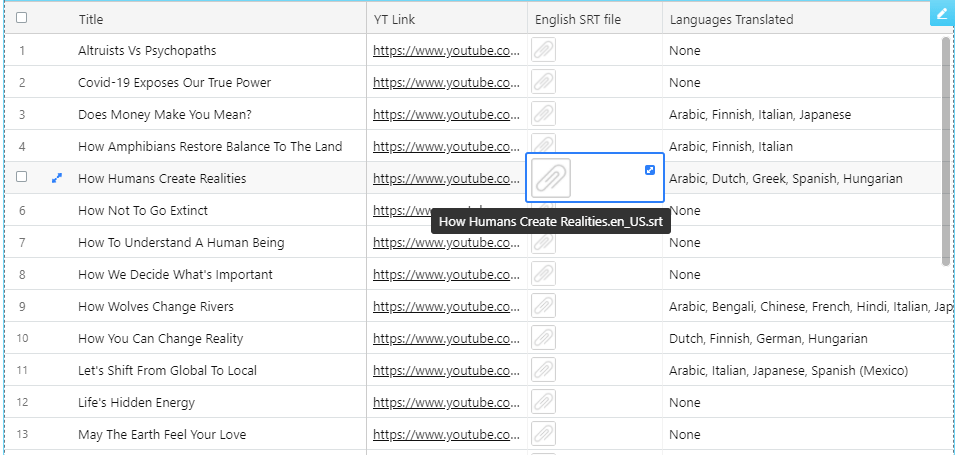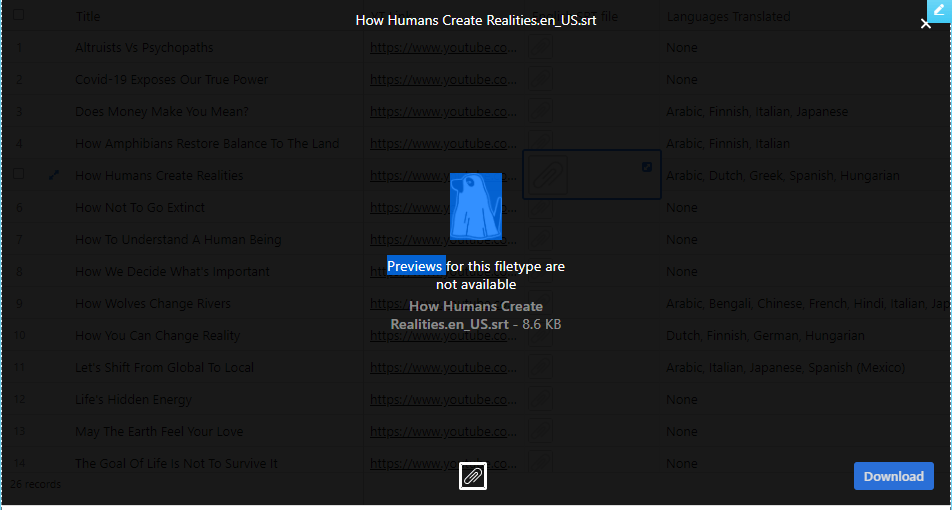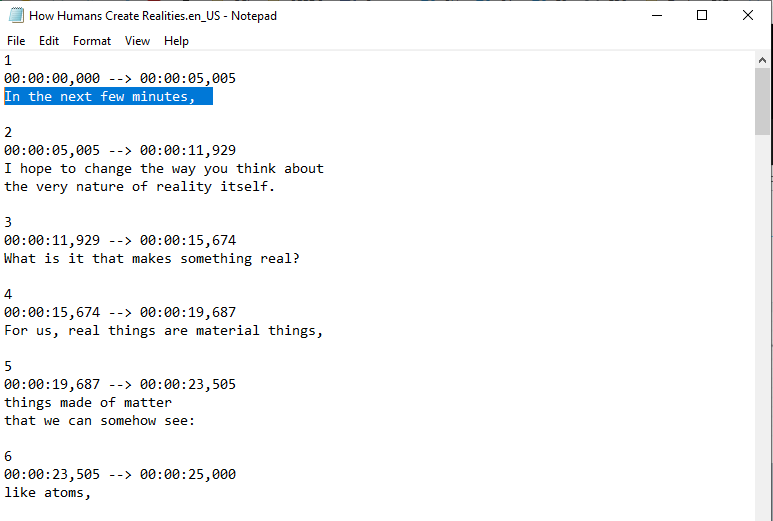
How can we transform our role from Earth’s conquerors to its healers, reigniting the ancient wisdom that regenerate the Earth?

In “The Hidden Lives of Bees,” narrated by Erika Thompson, we embark on a fascinating journey into the heart of a honeybee colony, revealing the extraordinary lives of these essential insects. The video offers a unique glimpse into the complex social structure of the hive, predominantly composed of female bees, whose roles and numbers fluctuate with the seasons. We explore the poignant lifecycle of male bees, produced in greater numbers for mating purposes, only to face expulsion or death as resources dwindle.
The narrative delves into the short yet industrious life of the female worker bees, whose lifespan varies dramatically from the bustling summer months to the resource-scarce winter. Their adaptability and the physiological changes they undergo to survive the colder months underscore their crucial role in the hive’s survival. The queen bee’s epic mating flight is depicted with vivid detail, highlighting her interaction with drone bees in a dramatic and fatal dance of reproduction that ensures the colony’s continuity.
Thompson challenges common misconceptions of the hive as a monarchy, illustrating instead a democratic society where collective decisions by the worker bees dictate the colony’s fate. This segment illuminates the intricacies of queen selection and the nuanced communication methods bees employ, from taste receptors on their feet to the use of antennae for interaction and navigation within the dark confines of the hive.
The video culminates in an exploration of the bees’ architectural prowess, showcasing their ability to construct the iconic hexagonal comb structures with precision and purpose. This segment not only celebrates the bees’ natural engineering skills but also their sustainable practices, as they build their homes from beeswax produced by their own bodies. “The Hidden Lives of Bees” is a testament to the marvels of the bee world, urging viewers to appreciate the intricate balance of nature and the indispensable role bees play in sustaining life on Earth.
Most people have never seen a male honeybee before. And that’s just because a honeybee colony is about 95% female and the amount of male bees can actually fluctuate throughout the year. So when we need male bees around to mate with a queen, the colony will produce more male bees. They stay in the hive or they leave and they go to drone congregation areas to mate with a queen. In the winter, when there aren’t as many resources available to the bees, the female bees will kick all the male bees out of the hive and they’ll either starve or freeze to death.
Bees live a very short lifespan, so in the spring and summer, when the bees are working their hardest, the female worker bees will only live about six weeks. In the winter, when they’re not doing quite as much, and when we need more bees to make it through the winter, they’ll live about six months and their bodies actually change in the winter. The bees that are born later in the year and need to make it through the winter will have more fat bodies on them, so that they can make it through the dearth when there’s nothing in bloom and when bees are living off the honey that they collected or stored in their hive earlier in the year.
The queen can live the longest. She can live about five years. Once a queen bee is born, when she reaches the ripe age of about seven days old, she’ll go on a mating flight. And she’ll fly out of the hive and she’ll go to a drone congregation area where there’s a bunch of drone male honey bees flying around just waiting for a queen bee to fly by. If a queen bee flies by, the fastest, strongest drones win and they will successfully mate with a queen and the queen will mate with only about 15 to 20 drone bees and she’ll have enough sperm to last the rest of her life. And what happens to the male bees is once they mate with the queen, their endo phallus rips out of their abdominal cavity and they fall to the ground and that’s the end of their little bee life.
We often think of a colony of bees being a monarchy where the queen is in charge and making all of the decisions but that’s not the case at all. It’s the colony making the decisions. So it’s all the worker bees, it’s the collective of female worker bees making that decision. And they can take any female egg and turn it into a queen bee not only by that diet of royal jelly, but they will also make the cell that the bee is born into a little bit bigger to accommodate the queen bee’s larger body size. So it’s actually the group of female worker bees that’s making that decision and the queen bee doesn’t always know when she’s in her final days, it’s the colony that would know. Her pheromones would get weaker and they would prepare for having a new queen.
Their world very much exists through sense, but they don’t really have a nose like we do. They can taste through their feet. They even have a way to taste the difference between sweet and salty through their feet. They have antennae too which help them move within the colony and talk to each other and clean themselves.
The comb building is a really interesting process because we see little hexagons within the hive, but they actually start off building it as circles. So the weight of the hive will bring it down and the way that they build the comb is actually up at an angle so that the honey doesn’t seep out. It’s remarkable what they have figured out how to do as a species, how to engineer this perfect building and do it out of beeswax, out of something that their body produces naturally. I mean I can think of no better example that nature has given us for a sustainable creature that can build its home out of something that comes off of its body and then always leave the world better than they found it. It’s they’re amazing.
 Erika Thompson is the Founder and Owner of Texas Beeworks and the most-followed beekeeper in the world. She is a proud native Texan, has called Texas home every day of her life and graduated from the University of Texas with a degree in Geography and the Environment. As a child, she was fascinated with insects and spent her nights and weekends in her backyard in Houston, Texas collecting every bug and critter could find. Her love for bugs continued throughout her life and she took a beekeeping class in 2011 with no intention of becoming a beekeeper, but simply because she wanted to learn more about honeybees as a species. She walked away from the class enamored with bees and started her first hive in her backyard in central Austin. As her adoration and admiration for honeybees grew, so did her number of hives. She started Texas Beeworks in 2014 while working a full-time, fast-paced job as a Communications Director. After years of doing beework on nights, weekends, and even lunch breaks, she quit her office job to become a full-time beekeeper and hasn’t looked back. Her work with honeybees and her advocacy efforts to protect pollinators has been featured on CNN, the BBC, the Washington Post, NPR, the Today Show, the Joe Rogan Experience and more.
Erika Thompson is the Founder and Owner of Texas Beeworks and the most-followed beekeeper in the world. She is a proud native Texan, has called Texas home every day of her life and graduated from the University of Texas with a degree in Geography and the Environment. As a child, she was fascinated with insects and spent her nights and weekends in her backyard in Houston, Texas collecting every bug and critter could find. Her love for bugs continued throughout her life and she took a beekeeping class in 2011 with no intention of becoming a beekeeper, but simply because she wanted to learn more about honeybees as a species. She walked away from the class enamored with bees and started her first hive in her backyard in central Austin. As her adoration and admiration for honeybees grew, so did her number of hives. She started Texas Beeworks in 2014 while working a full-time, fast-paced job as a Communications Director. After years of doing beework on nights, weekends, and even lunch breaks, she quit her office job to become a full-time beekeeper and hasn’t looked back. Her work with honeybees and her advocacy efforts to protect pollinators has been featured on CNN, the BBC, the Washington Post, NPR, the Today Show, the Joe Rogan Experience and more.
“Wow, really enjoyed the video!”
“Brilliant!… and brilliant presentation!… always something new to learn, even if you think you know most of the important parts…”
“Facinating 😮”
In “The Hidden Lives of Bees,” narrated by Erika Thompson, we embark on a fascinating journey into the heart of a honeybee colony, revealing the extraordinary lives of these essential insects. The video offers a unique glimpse into the complex social structure of the hive, predominantly composed of female bees, whose roles and numbers fluctuate with the seasons. We explore the poignant lifecycle of male bees, produced in greater numbers for mating purposes, only to face expulsion or death as resources dwindle.
The narrative delves into the short yet industrious life of the female worker bees, whose lifespan varies dramatically from the bustling summer months to the resource-scarce winter. Their adaptability and the physiological changes they undergo to survive the colder months underscore their crucial role in the hive’s survival. The queen bee’s epic mating flight is depicted with vivid detail, highlighting her interaction with drone bees in a dramatic and fatal dance of reproduction that ensures the colony’s continuity.
Thompson challenges common misconceptions of the hive as a monarchy, illustrating instead a democratic society where collective decisions by the worker bees dictate the colony’s fate. This segment illuminates the intricacies of queen selection and the nuanced communication methods bees employ, from taste receptors on their feet to the use of antennae for interaction and navigation within the dark confines of the hive.
The video culminates in an exploration of the bees’ architectural prowess, showcasing their ability to construct the iconic hexagonal comb structures with precision and purpose. This segment not only celebrates the bees’ natural engineering skills but also their sustainable practices, as they build their homes from beeswax produced by their own bodies. “The Hidden Lives of Bees” is a testament to the marvels of the bee world, urging viewers to appreciate the intricate balance of nature and the indispensable role bees play in sustaining life on Earth.
Most people have never seen a male honeybee before. And that’s just because a honeybee colony is about 95% female and the amount of male bees can actually fluctuate throughout the year. So when we need male bees around to mate with a queen, the colony will produce more male bees. They stay in the hive or they leave and they go to drone congregation areas to mate with a queen. In the winter, when there aren’t as many resources available to the bees, the female bees will kick all the male bees out of the hive and they’ll either starve or freeze to death.
Bees live a very short lifespan, so in the spring and summer, when the bees are working their hardest, the female worker bees will only live about six weeks. In the winter, when they’re not doing quite as much, and when we need more bees to make it through the winter, they’ll live about six months and their bodies actually change in the winter. The bees that are born later in the year and need to make it through the winter will have more fat bodies on them, so that they can make it through the dearth when there’s nothing in bloom and when bees are living off the honey that they collected or stored in their hive earlier in the year.
The queen can live the longest. She can live about five years. Once a queen bee is born, when she reaches the ripe age of about seven days old, she’ll go on a mating flight. And she’ll fly out of the hive and she’ll go to a drone congregation area where there’s a bunch of drone male honey bees flying around just waiting for a queen bee to fly by. If a queen bee flies by, the fastest, strongest drones win and they will successfully mate with a queen and the queen will mate with only about 15 to 20 drone bees and she’ll have enough sperm to last the rest of her life. And what happens to the male bees is once they mate with the queen, their endo phallus rips out of their abdominal cavity and they fall to the ground and that’s the end of their little bee life.
We often think of a colony of bees being a monarchy where the queen is in charge and making all of the decisions but that’s not the case at all. It’s the colony making the decisions. So it’s all the worker bees, it’s the collective of female worker bees making that decision. And they can take any female egg and turn it into a queen bee not only by that diet of royal jelly, but they will also make the cell that the bee is born into a little bit bigger to accommodate the queen bee’s larger body size. So it’s actually the group of female worker bees that’s making that decision and the queen bee doesn’t always know when she’s in her final days, it’s the colony that would know. Her pheromones would get weaker and they would prepare for having a new queen.
Their world very much exists through sense, but they don’t really have a nose like we do. They can taste through their feet. They even have a way to taste the difference between sweet and salty through their feet. They have antennae too which help them move within the colony and talk to each other and clean themselves.
The comb building is a really interesting process because we see little hexagons within the hive, but they actually start off building it as circles. So the weight of the hive will bring it down and the way that they build the comb is actually up at an angle so that the honey doesn’t seep out. It’s remarkable what they have figured out how to do as a species, how to engineer this perfect building and do it out of beeswax, out of something that their body produces naturally. I mean I can think of no better example that nature has given us for a sustainable creature that can build its home out of something that comes off of its body and then always leave the world better than they found it. It’s they’re amazing.
“Wow, really enjoyed the video!”
“Brilliant!… and brilliant presentation!… always something new to learn, even if you think you know most of the important parts…”
“Facinating 😮”
Find out how video storytelling can help your audience resonate with your sustainable idea, research, campaign or product.



We never send solicitations or junk mail and we never give your address to anyone else.


